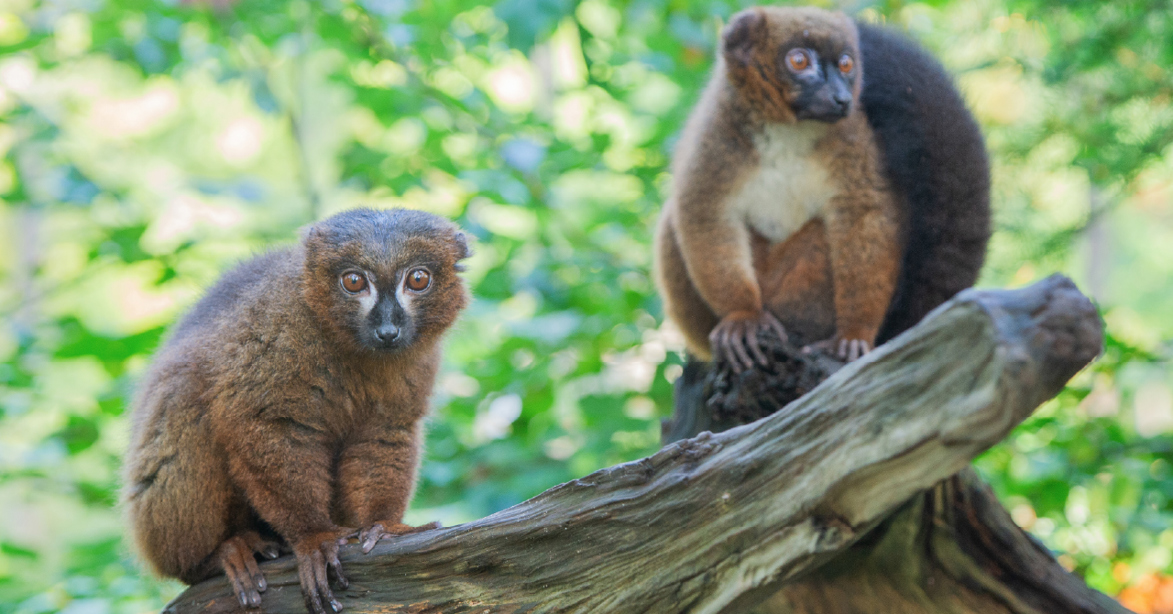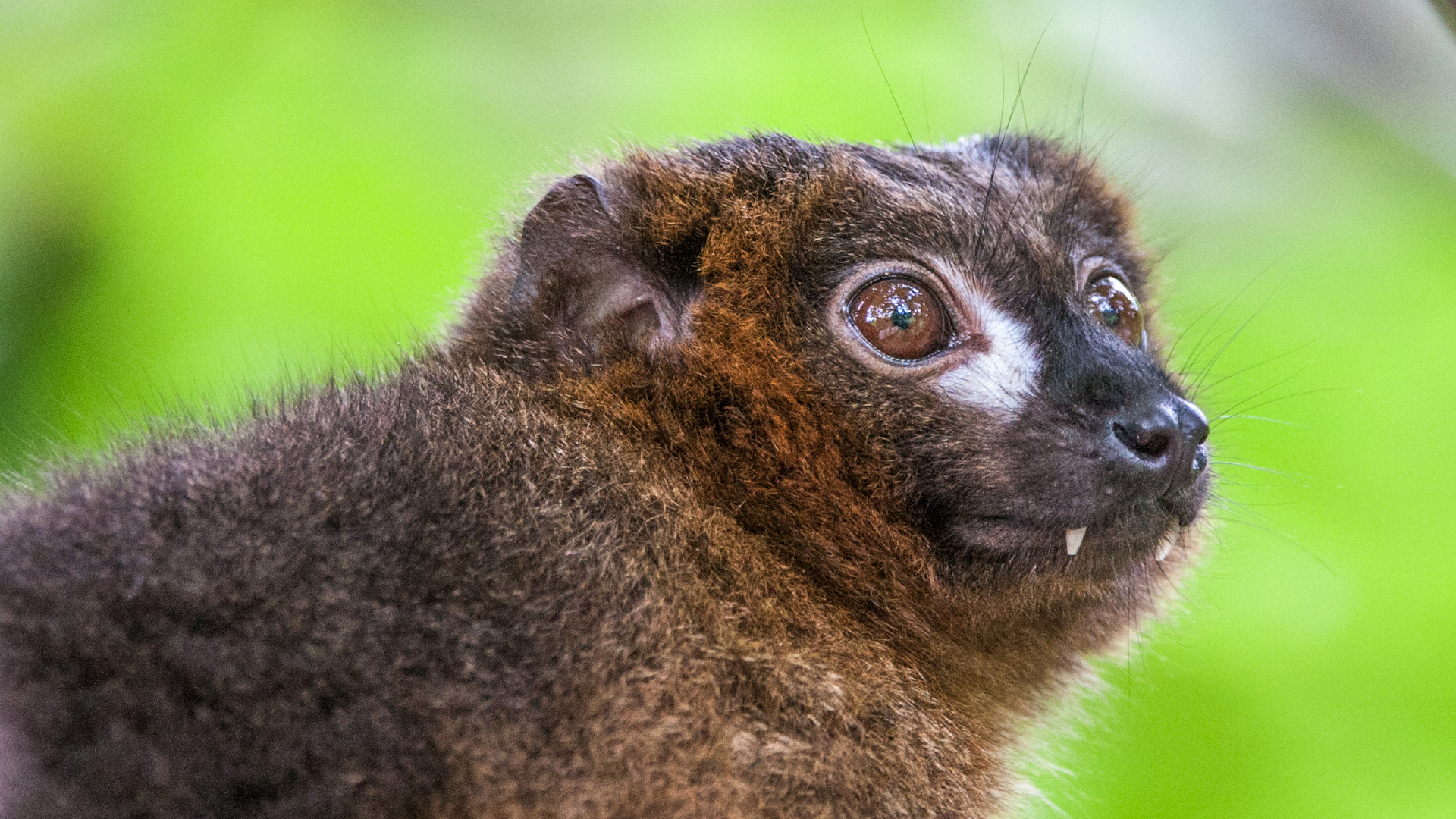Red-bellied lemur
Eulemur rubriventer
Habitat
Tropical rainforest
Food
Fruits, leaves, nectar
Weight
± 2 kg
Age
15 to 20 years
IUCN Status
Kwetsbaar
Appearance
Red-bellied lemurs thank their name to the appearance of the adult males. In fact, only the males have a red belly. For the rest red-bellied lemurs have a thick, reddish-brown fur. Their tail is coloured black. You can recognize the males based on two things: they have white spots around their eyes and a greasy spot on the top of their heads. That’s a scent gland with which they mark their surroundings with scents, looking kind of similar to a gelled hairstyle. Furthermore, all red-bellied lemurs carry these scent glands around their anus. Red-bellied lemurs classify as half-apes. So they have quite a long and pointy nose, with eyes that look straight forward.
Habitat
In the wild, red-bellied lemurs live on the east of the African island Madagascar. Here, they occupy the tropical rainforests.
Lifestyle
Red-bellied lemurs live in small and familiar groups. In such a group, the father and mother live together with their own offspring. Red-bellied lemurs are monogamous: a pair stays together for their entire lives: you don’t see this often in the primate world! Females are the leaders with the red-bellied lemurs. For example, they have the first right to yummy snacks!
Behaviour
In the wild, foraging food takes up most of the red-bellied lemurs’ daily life. For the rest they take care of each other a lot. This is how they keep up their social contacts. Red-bellied lemurs have a couple of special “attributes” that are used to maintain each other’s fur. Their lower teeth take on the shape of a comb. With this “cleaning comb” they take care of one another’s fur, which is an extremely valuable way to nurture their social contacts. Aside from this, red bellied lemurs have a special “cleaning nail”. This nail is situated on the second toe on their feet. This too is used to pick through each other’s fur.

Reproduction
Female red-bellied lemurs usually give birth to their first child when they’re about two years old. For the first few weeks the young clamps on to their mother belly, later they hitchhike on their mothers back. In the beginning the mother takes on the full care for the offspring, though after a few weeks the father is allowed to interfere as well. After two years the child is fully developed, and classifies as an adult. It is then “evicted” from home to find their partner and raise their own family.
Situation in the wild
The habitat of the red-bellied lemurs is constantly decreasing. Deforestation is a large issue, and the animals are being hunted. They’re not as endangered as some other half-ape species, such as the blue eyed lemur. Luckily action is being taken to protect these animals in for example national parks and -reserves.

At Apenheul
The red-bellied lemurs in Apenheul roam freely among the visitors. They live in the Madagascar-area, together with a couple of other lemur species.
Population management programme
Apenheul is part of the European endangered species programme (EEP) for red-bellied lemurs. By working together with other zoos we ensure a genetically healthy and demographically stable population of this species is maintained in zoos.
Fun facts
- Male red-bellied lemurs have a special scent gland on their forehead. They often rub this on their female counterpart. This makes it immediately clear who belongs to who. How nice to have a familiar perfume!
- All red-bellied lemurs are born with a light coloured belly. This stays the same with the females, though it slowly turns red with the males. The animals are therefore named after just the appearance of the males.
Want to see the Red-bellied lemur at Apenheul?
Get your tickets now and roam freely among the primates!

Welcome to Apenheul
Open for business events
Park open from Friday 20 March, 10.00 hour